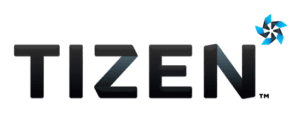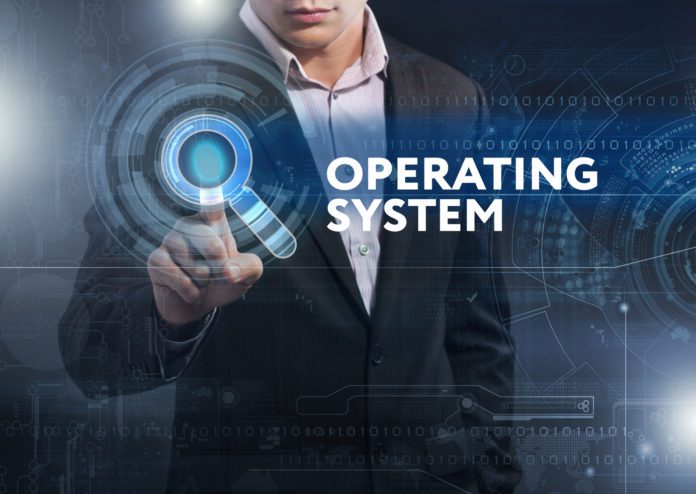As with any other computing system, an Internet of Things (IoT) deployment is incomplete without an operating system. These operating systems enable users to carry out basic computing functions within Internet-connected devices.
In this article, we take a look at these IoT operating systems, and we detail the leading OSes that are used to drive IoT systems.
Also see: 6 IoT Challenges and How to Fix Them
What are IoT Operating Systems?
IoT operating systems are operating systems that enable developers and business teams to engage with embedded devices and systems, program their capabilities, and track the data they generate as part of IoT applications.
These operating systems provide processing ability at a scale required for stable and consistent performance. Akin to standard operating systems, IoT operating systems help users to execute computer functions within connected devices.
Also see: 7 Enterprise Networking Challenges
Why Use IoT Operating Systems?
IoT strategies are increasingly being prioritized by businesses across numerous industries as greater connectivity of devices and systems shows promise in optimizing customer experience and operations in unprecedented ways.
For a successful IoT initiative, developers require access and control over individual devices to ensure they execute the correct applications for each device system or asset. An IoT operating system gives them such power.
IoT operating systems will be useful to you if you seek to:
- Manage software and data on individual IoT devices.
- Tweak programming for each device for maximum effectiveness in an IoT architecture.
- Conserve the utilization of resources and power across IoT hardware.
- Link embedded devices to IoT applications, cloud services, or edge devices.
Also see: Best Network Management Solutions
How to Choose an IoT Operating System
To choose the correct IoT operating system for your applications and environments, there are a few factors to consider:
- Use Case: Since IoT operating systems differ in functionality and application, the desired use case of a user determines the kind of IoT operating system they implement.
- Security: The operating system has to offer the right security add-ons for the applications and environments of its users since IoT security is one of the biggest determinants of the success of IoT initiatives. Vulnerabilities and security gaps exploited by threat actors often result in expensive consequences for IoT systems.
- Scalability: A good IoT operating system provides scalability for any type of device in a user’s environment.
- Connectivity: An operating system that supports a wide range of connectivity protocols should be considered. It should also support relevant and up-to-date protocols to ensure it is future-proof.
- Footprint: Dependent on the use case, it is important to choose an operating system that meets memory, power, and processing requirements. When dealing with constrained devices, the operating system should have minimal processing, power, and memory overhead.
Also see: Top Edge Computing Companies
Top IoT Operating Systems
Nucleus RTOS

Highly demanding markets with stringent safety and security prerequisites like industrial systems, airborne systems, medical devices, and automotive all feature successful Nucleus deployments.
Key Differentiators
- Multicore Support: Nucleus RTOS provides extensive multicore support with both 32-bit and 64-bit solutions for uAMP, sAMP, and SMP architectures.
- Process Model: Nucleus uses its process model to deliver greater reliability by providing space domain partitioning to isolate software and subsystems.
- Low-Power Design: Through the Nucleus Power Management Framework, Nucleus RTOS offers embedded developers the latest power-saving features. Developers can use this framework to create power-aware applications that satisfy the low-power requirements of embedded systems.
- Support for Diverse Connectivity Solutions: Nucleus supports a wide range of connectivity solutions, including optimized USB 2.0 and 3.0, SDIO 2.0 and 3.0, 802.15.4, Bluetooth Low Energy (BLE) and Bluetooth, Wi-Fi, and PCIe.
TinyOS

Since TinyOS is dependent on the events it receives from its environment, it is an event-driven operating system. Its memory optimization capabilities make TinyOS popular among developers.
Key Differentiators
- Optimization for Memory Limits of Sensor Networks: The applications of TinyOS are written in a dialect of the C programming language called nesC, which is optimized for the memory limits of sensor networks.
- Common Abstraction Interfaces and Components: TinyOS delivers interfaces and components for standard abstractions like routing, packet communication, actuation, sensing, and storage.
- Simulation of Algorithms and Protocols: The TinyOS operating system contributes to the simulation of algorithms and communication protocols on a large scale. TinyOS is thus useful for the development of communication protocols for wireless sensor networks.
Amazon FreeRTOS

Some of FreeRTOS’s use cases include the local collection and processing of data, management of multiple commercial equipment tasks and the remote updating of devices.
Key Differentiators
- Connectivity: FreeRTOS devices can maintain local connectivity via Ethernet and Wi-Fi using local connectivity libraries like Wi-Fi management. FreeRTOS also supports cloud connectivity to enable users to comfortably collect data and act on microcontroller-based devices for use in IoT applications as well as with other AWS cloud services.
- AWS IoT Features and Services Support: Amazon FreeRTOS supports AWS IoT features and services such as AWS IoT Core Device Shadow and AWS IoT Device Defender.
- Over-the-Air Updates: Using FreeRTOS with AWS IoT Device Management delivers an over-the-air update solution. FreeRTOS makes it less memory-intensive to deploy over-the-air updates for microcontroller-based devices.
Windows 10 IoT

Windows 10 IoT comes in two editions: Windows 10 IoT Core and Windows 10 IoT Enterprise.
Key Differentiators
- Windows 10 Enterprise: Windows 10 IoT Enterprise delivers the full power of Windows 10 Enterprise for usage in dedicated devices like retail points of sale, smart gateways, robotics, kiosks and more.
- Security: Windows 10 IoT has numerous security features to keep up with the ever-growing need to manage and secure digital devices with the increased prevalence of IoT. Windows 10 IoT offers device security technologies such as Trusted Platform Module (TPM), Secure Boot, BitLocker, Device Guard, and Device Health Attestation.
- Development Tools: Windows for IoT delivers effective and familiar development tools to create and manage IoT devices.
- Open Cloud Protocol Support: Windows for IoT supports open cloud protocol and out-of-the-box experiences that deliver Azure intelligence to Windows for IoT.
Tizen

It provides a set of exhaustive tools to create Tizen-native and web applications through Tizen Studio, which consists of an integrated development environment (IDE), toolchain, Emulator, sample code, and documentation.
Key Differentiators
- Multiple Profiles: The Tizen operating system presents multiple profiles to cater to different industry requirements. These Tizen profiles include Tizen IVI (in-vehicle infotainment), Tizen TV, Tizen Mobile, and Tizen Wearable. All of these profiles are built atop the same shared infrastructure called Tizen Common, as of Tizen 3.0.
- Operating System Customization: With Tizen, device partners and mobile operators can work together to customize the operating system and user experience to satisfy the specific customer needs of their customer segments.
- Native Application Development: Tizen provides the power of native application development to application developers and independent software vendors, with flexible HTML5 support. It enables application developers to widen their scope to smart devices running Tizen.
RIOT OS

Key Differentiators
- Connectivity: RIOT OS uses a modular approach to adapt to application needs and break silos. The operating system seeks to support all standard network technologies and internet standards.
- Security: RIOT supports DTLS security, IEEE 802.15.4 encryption, secure firmware updates, numerous cryptographic packages, and crypto-secure elements to enable secure IoT applications.
- Code Quality: The RIOT community uses established tools to constantly test code and maintain the highest standards of code quality.
Wind River VxWorks

VxWorks also supports application deployment through containers. This modern approach to RTOS raises developer productivity and helps them deploy embedded and safety-critical applications confidently.
Key Differentiators
- Extensive Multi-Core and Multiprocessing Support: VxWorks helps its users utilize hardware to its fullest potential, as it supports 32- and 64-bit multi-core processors based on Arm, Intel, RISC-V, and Power architectures.
- OCI Containers: Users can use IT-like tools and methods to package and deploy their applications at a rapid speed. They can push their applications to standard container registries and pull them from their deployed VxWorks-based devices.
- Security Capabilities: VxWorks integrates comprehensive and rapidly evolving security capabilities to enable architects to develop levels of security that are suitable for the attack surface and threats facing their use cases and environments.
Comparison Chart: IoT Operating Systems
| Operating System | Real-Time | Multicore Support | Virtual | Security | IDE |
| Nucleus RTOS | ✔ | ✔ | ⨯ | Boot, data and communications including TLS 1.3, secure storage, root of trust, protection for data in transit etc | Integrated Sourcery Codebench IDE |
| TinyOS | ⨯ | ⨯ | ⨯ | Offers network security protocols | YETI 2, XPairtise, TinyDT |
| Amazon FreeRTOS | ✔ | ✔ | ⨯ | Libraries including secure cloud connection, certificate authentication, key management, code signing. TLS v1.2, cryptography | Microsoft Visual Studio |
| Windows 10 IoT | ✔ | ✔ | ⨯ | ASLR, DEP, control flow guard, trusted platform module, secure boot, BitLocker, Windows updates | Visual Studio, etc |
| Tizen | Tizen RT | ⨯ | ✔ | Tizen Secure Repository | Tizen Studio, Visual Studio |
| RIOT OS | Soft real-time capabilities | ⨯ | ⨯ | DTLS security, IEEE 802.15.4 encryption, cryptography, Secure Firmware Updates | RIOT shell |
| Wind River VxWorks | ✔ | ✔ | ✔ | TPM 2.0/TSS support, Firewall, Cryptography, AD/LDAP support, Kernel hardening, secure boot, secure ELF, secure storage, address sanitizer | ✔ Eclipse-based IDE |



